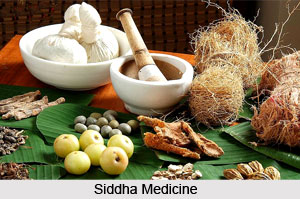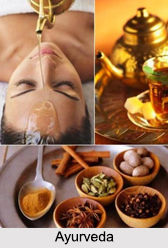 Ayurveda states that snehana and swedana therapies prepare the patient for virechana therapy. Preparation and administration of virechana mainly involves full oleation that is essential to dislodge the aama and toxins and draw them into the small intestine from the surrounding tissues and organs in the pitta zone. It insures that the purgation will be complete and comfortable. Oleation is accomplished both external and by the ingestion of oleaginous substances. For internal oleation, bitter ghee is considered as the best substance and it works on the organs in the pitta area and on all doshic functions throughout the body. Virechana`s stimulus should be used when the pitta`s physiological activity peaks mainly in the hours around noon and midnight. It should also be used when agni bhuta is at its height of influence in the environment.
Ayurveda states that snehana and swedana therapies prepare the patient for virechana therapy. Preparation and administration of virechana mainly involves full oleation that is essential to dislodge the aama and toxins and draw them into the small intestine from the surrounding tissues and organs in the pitta zone. It insures that the purgation will be complete and comfortable. Oleation is accomplished both external and by the ingestion of oleaginous substances. For internal oleation, bitter ghee is considered as the best substance and it works on the organs in the pitta area and on all doshic functions throughout the body. Virechana`s stimulus should be used when the pitta`s physiological activity peaks mainly in the hours around noon and midnight. It should also be used when agni bhuta is at its height of influence in the environment.
The meal that immediately precedes the process of virechana comprises foods that enhance secretions from the organs governed by pitta. These foods are high in pitta promoting qualities. They are usually hot, spicy and sour. The purgative is taken when the meal is in the small intestine that is in the second stage of prakapa metabolism in digestion. This sour stage of transient digestion promotes pitta secretions in the mid-zone that supports virechana. It takes almost two and a half hours for the food to reach the phase of digestion. After consuming the meal, the patient is asked to refrain from any type of mental or physical activity. It would draw blood and doshic activity away from the gastrointestinal tract and out to the organs and periphery of the body. If it happens, the aama and the toxins are drawn back from the small intestine to the dhatus with the movement of the doshas.
The patient generally starts to feel the need to move his bowels several hours after taking the purgative. However, the response varies from one individual to another individual. When all the toxins from the small intestine have been expelled, the urge to evacuate naturally subsides. For successfully administering virechana therapy, the patient should have at least a minimum of four to six bowel movements. Otherwise, the entire procedure should be repeated within the span of few hours. If the downward motion of the vata does not work properly, the cleansing process will remain incomplete. By the time the cleansing process is finished, the patient will have completely liquid bowel movements that may contain some mucus. This shows that the small intestine has been emptied and mucus from the kapha zone and the stomach starts to come out. The purging process when finished stops automatically. After the completion of the virechana process, the patient is cautioned to keep away from cold baths and cold drinks. They should be avoided as they shrink the channels or shrotas and obstruct the natural flow of energy and aggravate vata. The patient can consume warm licorice tea as it soothes the intestinal tract.
Properly prepared and administered virechana therapy makes the patient feels light, strong and light. It also normalizes pitta along with appetite and digestion. It clears the mind as well by sharpening the intellect. Virechana therapy if carried out properly, eradicates the symptoms of pitta disorders as it cleanses the digestive tract.




















